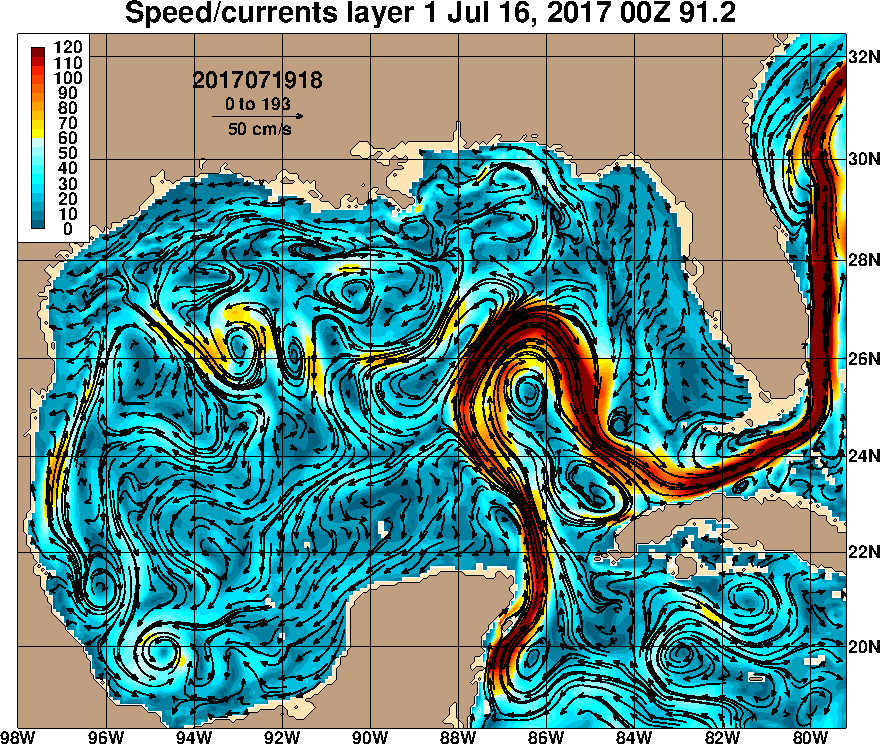
By Heather Coleman, NOAA Deep Sea Coral Research and Technology Program
August 13, 2017

Paul Sanacore, BGL Leslie Allen, and Erik Hodges readying the ROV Odysseus, operated by Pelagic Research Services, to descend in a survey on the West Florida Shelf. Image courtesy of Ralf Meyer, Green Fire Productions. Download larger version (jpg, 6.1 MB).
In an environment as challenging as the deep sea, research techniques take time and practice to produce results. Pressure in the deep ocean is crushing, salt water is corrosive, sunlight fades to blackness, weather is often uncooperative, bottom currents can be intense, and features far under the surface are not possible to observe by satellite. Deep-sea researchers adapt to these challenges by using tools such as submarines and robots, including remotely operated vehicles and autonomous underwater vehicles. Surveying the seafloor with a remotely operated vehicle (ROV) is a key method used to help find deep-sea coral and sponge habitats, and can yield powerful visuals that inform resource management.

Surface current speed in the Gulf of Mexico in July-August 2017. Red colors indicate the fastest currents. Animation courtesy of the U.S. Navy Layered Ocean Model. Download (gif, 2.8 MB).
It can often take a great deal of testing and refinement before ROV surveys produce useful results, especially when unexpected conditions present new challenges. Today, the science team of the NOAA Southeast Deep Coral Initiative and Pelagic Research Services launched the mission’s first dive from NOAA Ship Nancy Foster. As it descended, the ROV Odysseus quickly encountered strong currents, which may have been caused by the northeastern edge of a fierce eddy, shown in the animation below. The current was ripping so fast that even with full thrusters, the ROV was running to stand still and sometimes even moving backwards at 450 meters depth.

NOAA Ship Nancy Foster stationed above the West Florida Shelf during ROV surveys. Image courtesy of Ralf Meyer, Green Fire Productions. Download larger version (jpg, 5.7 MB).
The science team could not effectively survey potential habitat areas of particular concern like this, so the team brought ROV Odysseus further up into the water column to reposition. Good choice – researchers gained more control of ROV movement and one of the malfunctioning transponders reconnected, providing more accurate location information.
The strength of the currents tugging on the ROV, its tether, or both surprised the team, especially considering it was one of the calmest, flattest sea states seen in the Gulf in a long while. When the ROV descended again, the team watched with great interest as it recorded bamboo corals, sponges, fish, shrimp, jellies, squid, and many other deep-sea dwellers.

Image of a bamboo coral captured by the ROV Odysseus near Long Mound on the West Florida Shelf at 412 meters depth. Image courtesy of NOAA Southeast Deep Coral Initiative and Pelagic Research Services. Download larger version (jpg, 1.5 MB).
With some kinks worked out (as they often are) on the first dive, all eagerly await the next day of problem solving and discovery.
The expedition is supported by NOAA’s Deep Sea Coral Research and Technology Program through the Southeast Deep Coral Initiative (SEDCI), a multi-disciplinary effort that will study deep-sea coral ecosystems across the Southeast United States in 2016-2019.